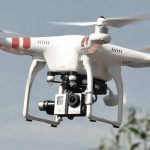 Using unmanned drones to deliver lifesaving vaccines in low- and middle-income countries may help save money as well as improve vaccination rates, a new study suggests.
Using unmanned drones to deliver lifesaving vaccines in low- and middle-income countries may help save money as well as improve vaccination rates, a new study suggests.
The cost savings would come from drones being able to deliver vaccines more quickly and cheaply than land-based methods limited by road conditions and the need for costly fuel and maintenance, the researchers said.
“Many low- and middle-income countries are struggling to get lifesaving vaccines to people to keep them from getting sick or dying from preventable diseases,” said Bruce Y Lee, from the Johns Hopkins Bloomberg School of Public Health.
In low- and middle-income countries, there are many challenges faced by immunisation programmes, which provide childhood vaccines such as hepatitis B, tetanus, measles and rotavirus, and will be utilised in the future as vaccines for dengue, malaria and Zika are developed and brought to market.
After entering a country, vaccine vials typically travel by road through two to four storage locations before arriving at clinics where health workers administer doses to patients.
Most vaccines need to remain refrigerated until they are used or they will spoil. Non-vaccine costs of routine immunisations are expected to rise by 80 per cent between 2010 and 2020, with more than one-third of costs attributable to supply chain logistics.
Supply chain inefficiencies can mean that many vaccines do not even reach the people who need them.
Meanwhile, unmanned drones have proliferated in recent years because they can traverse difficult terrain, reduce labour costs and replace fleets of vehicles. They have been used for surveillance and in humanitarian aid delivery.
Researchers created a computer model to simulate a traditional land-based transportation system – a combination of trucks, motorbikes and public transit – and compared it with an unmanned drone system for delivering vaccines.
They varied characteristics such as geography, population, road conditions and vaccine schedule in order to assess which conditions would most contribute to drones offering the biggest cost savings.
They found that using drones to get vaccines to vaccination locations could improve vaccine availability, potentially immunising 96 per cent of the target population as compared to 94 per cent using land-based transport, while producing about 20 per cent savings.
To save money, the drones would need to carry at least 0.4 litres of vaccines and the researchers say that the drones could carry at least 1.5 litres.
If there were no flight delays for scheduled drone deliveries and the drones carried 1.5 litres, each flight could cost up to $ 8.93 and annual infrastructure and overhead costs could cost up to $ 60,000 and still produce savings.
The research was published in the journal Vaccine.
Source: The Economic Times

















